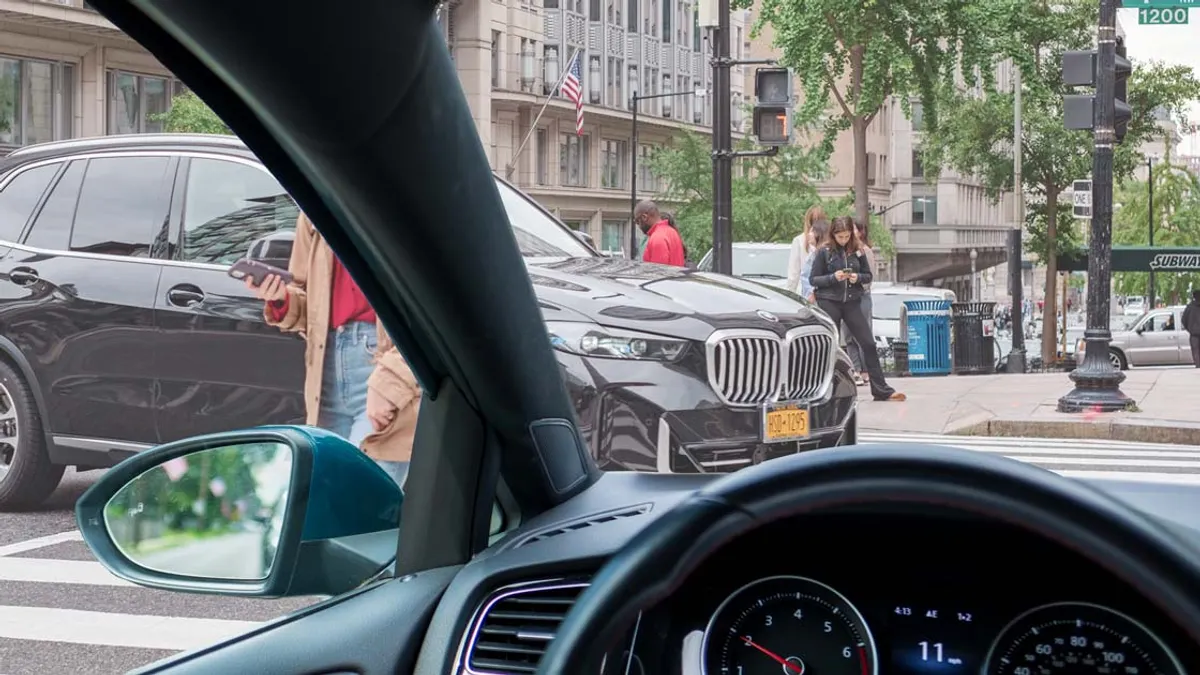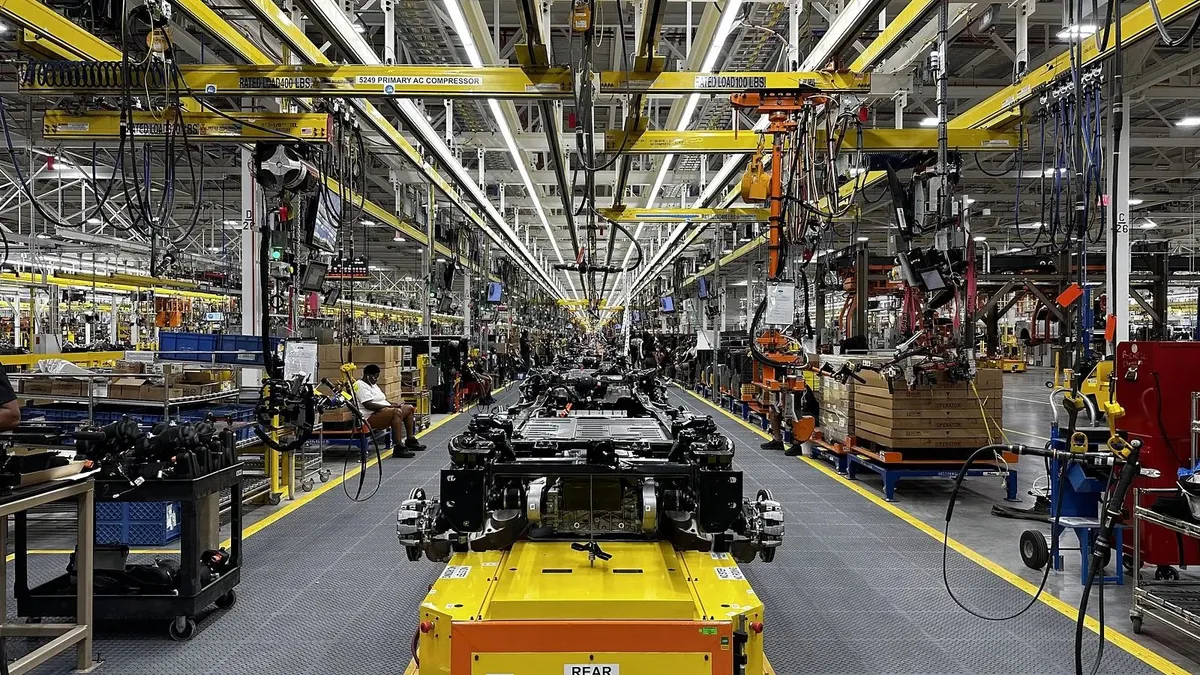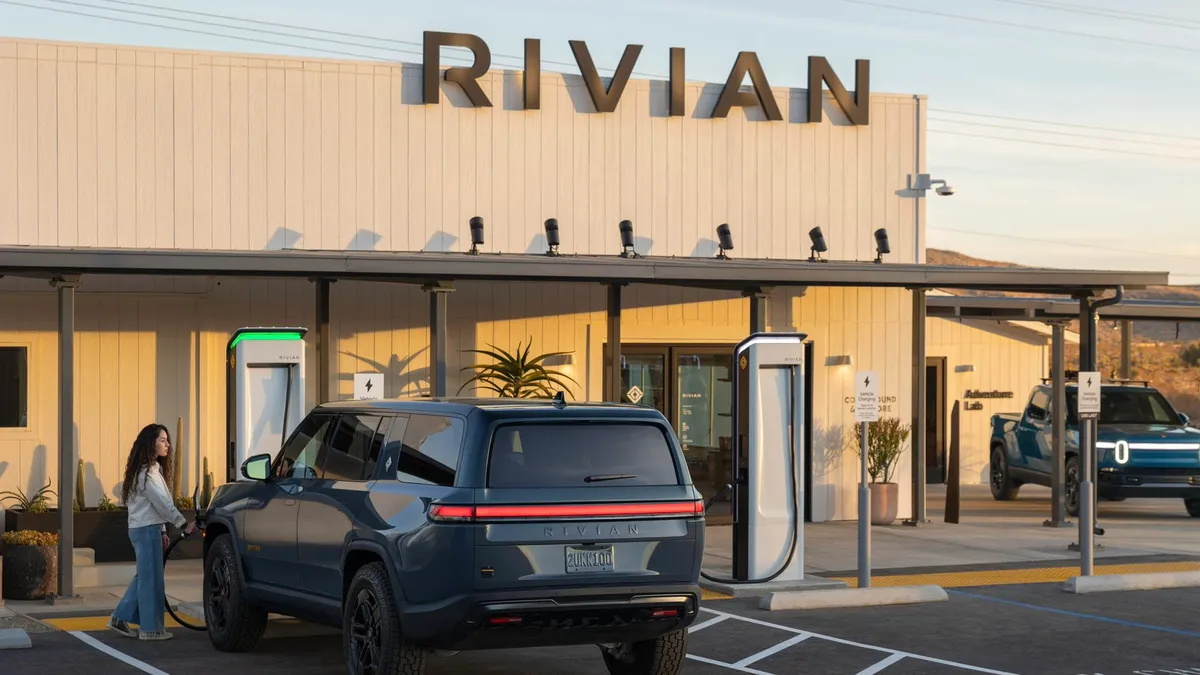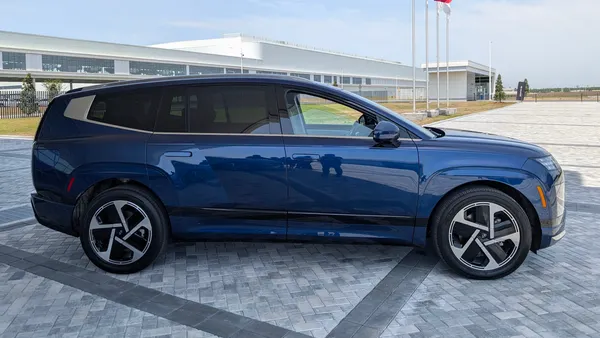The forward blind spots of six popular vehicles grew in size during the same period that U.S. pedestrian and cyclist deaths rose, according to new research using a measurement technique developed by the Insurance Institute for Highway Safety.
A new study by the U.S. Department of Transportation’s Volpe Center found that between 1997 and 2023, forward visibility for three popular SUVs (Chevrolet Suburban, Honda CR-V and Jeep Grand Cherokee) declined as much as 58%, while the forward visibility of a Ford F-150 passenger truck fell 17%.
The forward visibility of two popular cars (Honda Accord and Toyota Camry) also fell by about 8%.
During the same 25-year period studied, the number of pedestrians and cyclists killed on U.S. roads increased by 37% and 42%, respectively.
“The across-the-board decrease in visibility for this small group of models is concerning.” IIHS President David Harkey said in a statement. “We need to investigate whether this is a broader trend that may have contributed to the recent spike in pedestrian and bicyclist fatalities,” he said.
Refining research parameters
The Volpe Center’s research was made possible by a new technique IIHS developed to measure vehicle blind spots. Previously, IIHS said that researchers needed engineering drawings from automakers, or else position vehicles around grid lines and vehicle cones they had to arrange themselves. As such, researchers faced obstacles pursuing extensive studies on vehicle visibility.
IIHS’s new technique uses computational software and a 360-degree rotating camera that can be positioned at various heights in a vehicle’s driver seat, to represent the sizes of different drivers.
According to a different IIHS study, the blind spot maps produced with this new technique are “nearly identical” to the traditional methods researchers once had to use. This means the technique “promises to facilitate a raft of new research into driver visibility,” IIHS said.
The Volpe Center study on blind spots required creating blind spot maps of 17 different vehicles representing different model years of six vehicles, to study and compare changes in their vehicle design over time.
Visibility diminishes with taller vehicle fronts
The most dramatic decline in visibility came from the SUVs studied. For example, researchers found that the 1997 Honda CR-V allows drivers to see 68% of the area 10 meters in front of the vehicle, while drivers of the 2022 model year can only see 28% of the same area. Compared to the 1997 model, the 2022 Honda CR-V has a higher hood and larger side mirrors, which limits their visibility, IIHS said.
Meanwhile, visibility for drivers of the Honda Accord and Toyota Camry declined within the margin of error, and visibility for the Ford F-150 passenger truck was already low. Drivers in a 1997 Ford F-150 can see 43% of the area 10 meters in front of them, but that visibility only dropped to 36% for the 2015 model.
According to previous IIHS research, higher and more blunt vehicle fronts contribute to greater fatality risk.
“If further research confirms that [declining visibility] changes reflect a general change, that would suggest that declining visibility in SUVs has compounded the effects of taller, blunt-nosed vehicles that IIHS has already documented,” said Becky Mueller, co-author of the Volpe Center study and IIHS senior research engineer who led the development of the new measurement technique.










